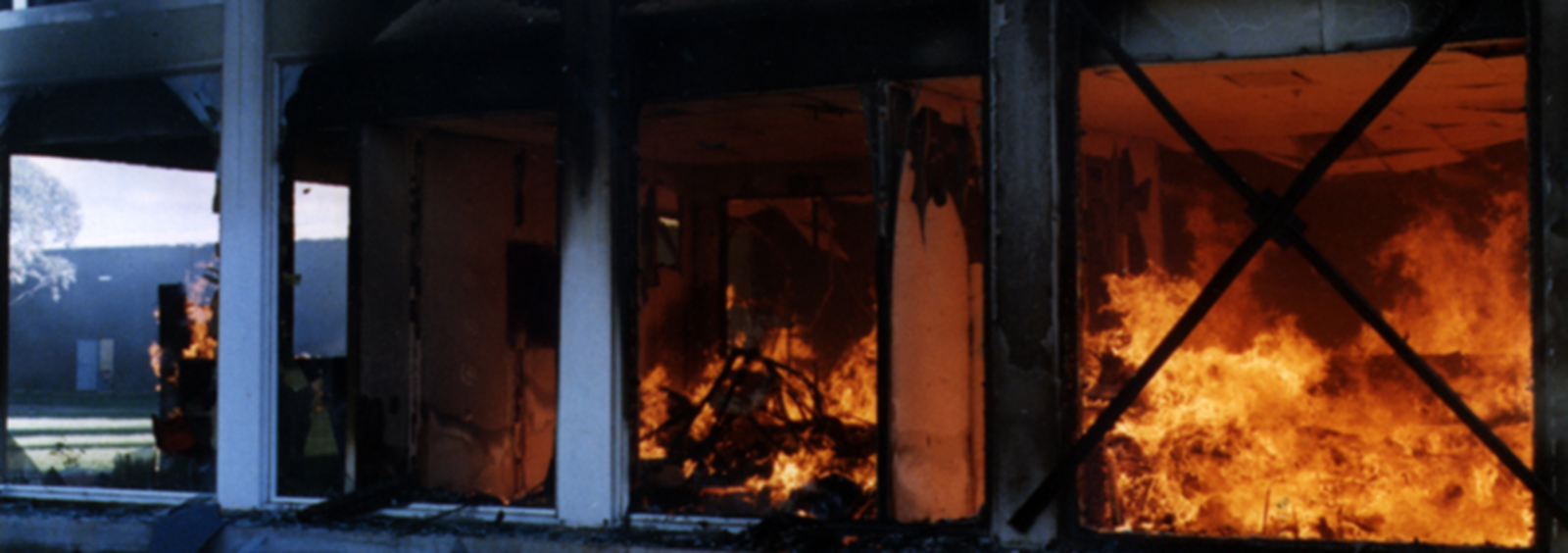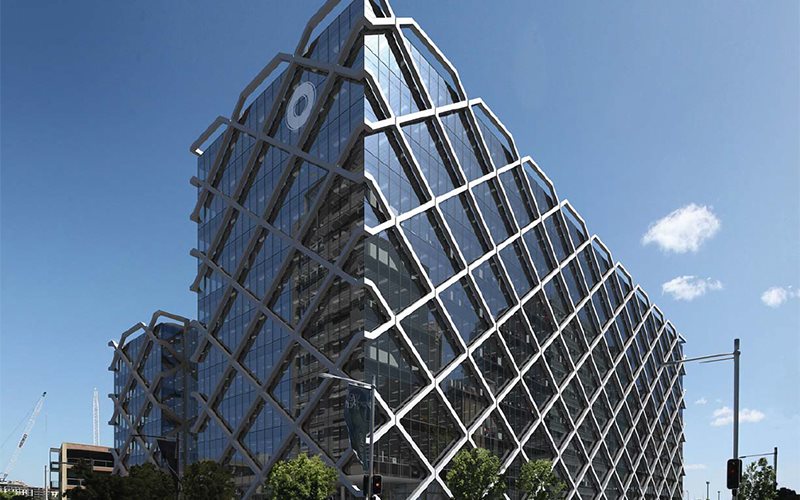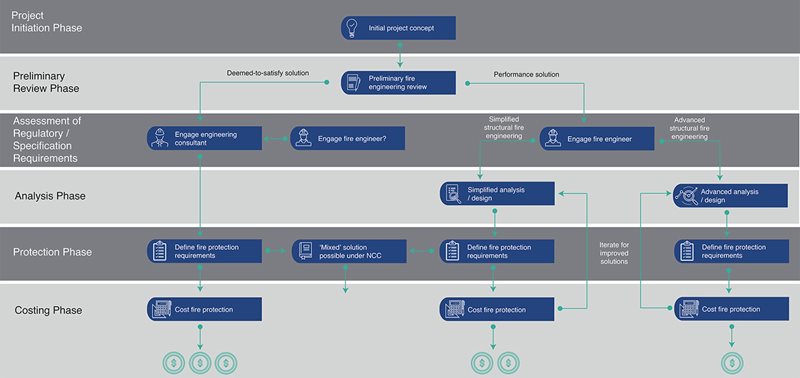

All construction materials react to fire in different ways, but steel is known for its durability, non-combustibility and fire-resistant characteristics.
When properly designed and constructed, a structural steel frame can retain its structural integrity for an extended period of time in the event of fire and prolonged exposure to elevated temperatures. Not only does this allow safe egress for occupants, it can limit structural damage and allow the structure to be assessed and reinstated safely, quickly and cost-effectively.
The National Construction Code (NCC) mandates well-defined performance requirements for structures exposed to fire events, with the principle objective of ensuring life safety for the occupants of the building or structure. These performance requirements can be satisfied wholly or by a combination of two different approaches:
.png?variant=HalfWidth)
The Deemed-to-Satisfy approach via prescriptive requirements is, by its nature, a generalised solution designed to be applicable to a majority of circumstances. It's typically a comparatively over-engineered and therefore expensive solution given there is reduced ability to match the solution to the exact project scenario.
A Performance Solution, on the other hand, has the capacity to provide a much better fit to the actual project scenario. It is therefore a value engineered solution with significant opportunity for enabling more cost-effective approaches.
The ASI strongly encourages exploration of performance-based approaches, termed fire-engineered design, for all but the most straightforward steel structures. Resources available in this section provide the background and basis for the selection of rational performance-based solutions for different building and structure types.
Fire testing provides the fundamental data and behavioural models for construction materials and systems. Steel is one of the most comprehensively fire tested structural framing materials. Over the past 30 years the steel construction sector internationally has carried out over a hundred individual fire tests, including large-scale tests demonstrating the behaviour of fire in real buildings.
Significant advances in our understanding of the behaviour of fire in different types of structures, the influence of relative fire size, member size, thermal mass and the robustness of fire-affected structural systems has resulted in increased opportunities for specialist fire engineering consultants to provide cost-effective performance-based solutions. At the same time, the development of a competitive and efficient fire-protection industry with innovative new products has helped reduce the cost of protecting steel. These positive influences have caused a significant reduction in the cost of fire solutions for steel buildings and structures over the last 30 years. That cost reduction is a result of both better technology and a reduction in the number of members that need to be fire protected.
It's worth noting that the potential for unprotected steel solutions has allowed architects to take full advantage of structural expression made possible by steel. Architecturally exposed structural steelwork (AESS) has become an iconic addition to many of our most prestigious building structures.

In relation to the behaviour of real steel structures under real fire conditions, the significant findings over the last 30 years of testing and numerical modelling include:

Both Australian and international Standards have been in a gradual transition from predominantly prescriptive approaches towards the performance-based fire-engineering approaches. In the majority of Standards, the implementation of performance-based solutions sits as an alternative alongside the more traditional prescriptive solutions, recognising that for simpler structures prescriptive approaches are perfectly adequate and the added effort of performance-based approaches may not be warranted.
Design for fire events is covered in a range of Australian and international Standards.
Assessment of either the Deemed-to-Satisfy or Performance-Based provisions of the National Construction Code (NCC) will result in a requirement for a level of fire protection (specified fire rating level or FRL) to be applied to structural members commensurate with building form, occupancy type and member function. The extent and level of fire protection required will likely be a maximum based on the prescriptive criteria under the Deemed-to-Satisfy approach, but can be eliminated or significantly reduced where a Performance-Based approach is adopted.
The following case studies illustrate real-world application of cost-effective responsive fire-engineered solutions: